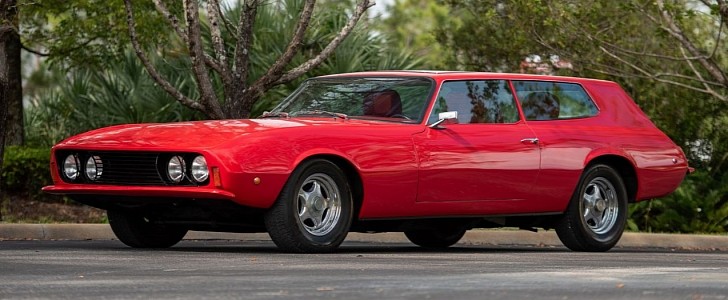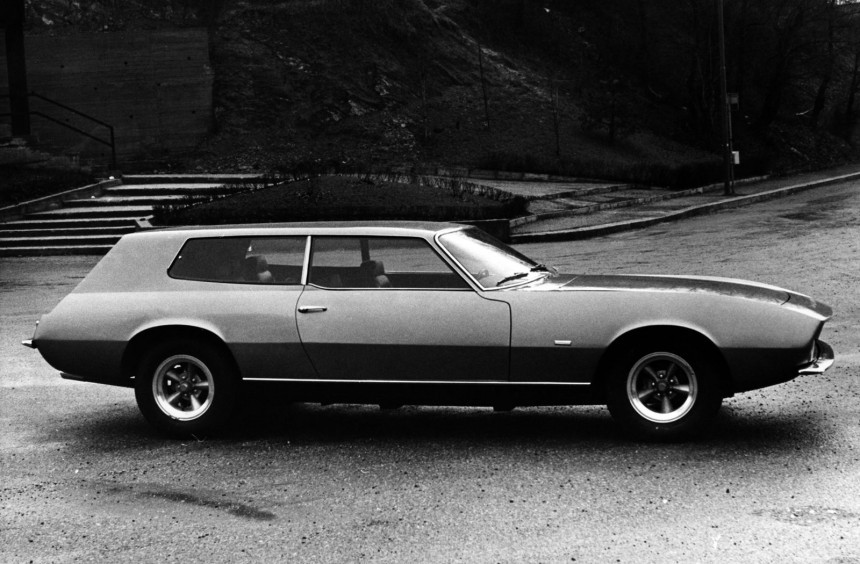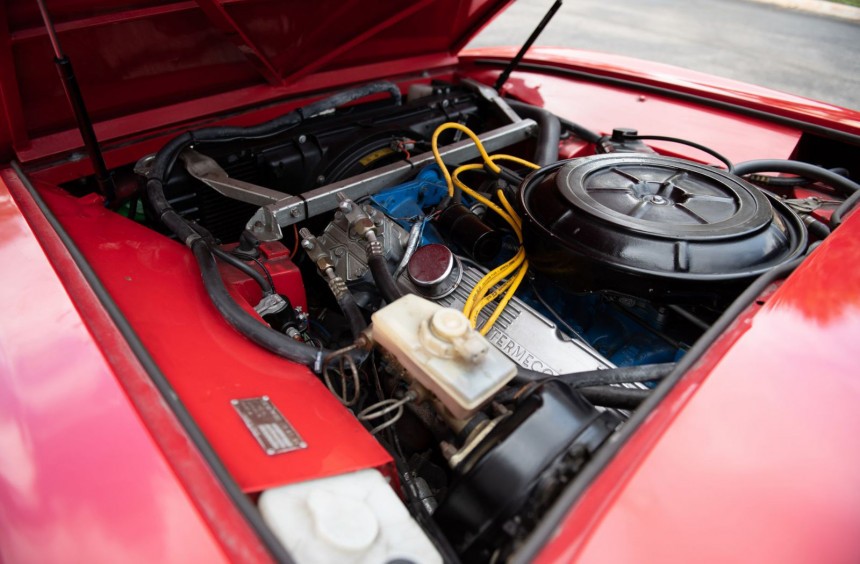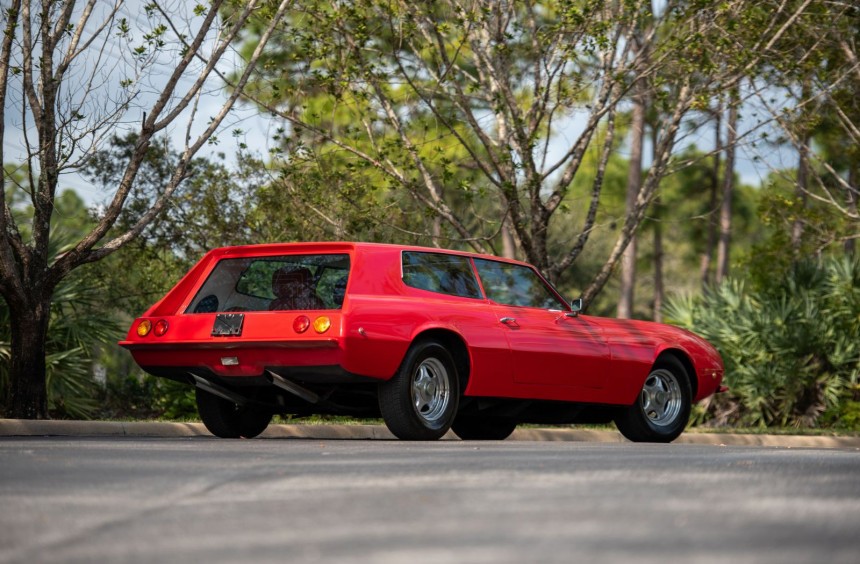Decades before such vehicles became popular, a small New York-based startup decided that the world needed a luxurious wagon beefed up with some V8 muscle.
During the golden age of muscle cars, some American carmakers also offered a big-block V8 as an option on the wood-trimmed, family-oriented members of their lineups. This led to oddities like the Cobra Jet-powered Ford Country Squire or the 440-ci (7.2-liter) Dodge Polara wagon. Although faster with these muscle car-derived powerplants, these models were still mundane people movers.
In 1968, two enthusiasts named Jospeh Vos and Charles Schwendler took things even further with the outrageous idea of combining a wagon with a classy two-door grand tourer around a big block.
A year later, they founded Murena Motors in New York, aiming to turn this idea into reality. The duo managed to source brand-new 429-ci (7.0-liter) engines, three-speed automatic gearboxes, and other chassis components from the Ford Thunderbird, but they lacked the means to design and fabricate the body or assemble their wild wagon.
The answer to all their problems came from Frank Reisner, a Hungarian-born Canadian citizen who at the University of Michigan and happened to own Turin-based Construzione Automobili Intermeccanica. Struggling to keep up with more successful Italian coachbuilders, Reisner offered to design the bodywork and assemble the first units at Intermeccanica’s facility for an attractive price. Development moved at a rapid pace, and the first pre-production prototype was ready in time for the 1969 New York Motor Show.
With subtle lines, a pair of double headlights, and a slim, chrome bumper, the car dubbed Murena 429 GT gave off Italian grand tourer vibes when viewed from the front. However, from the side, it was clear that this wasn’t a typical European car. Measuring more than 16-feet (4.9 meters) in length and boasting a shooting brake-style rear end, it redefined what people called a wagon.
Like a thoroughbred sports car, the GT had two doors instead of four and featured a luxurious, full-leather interior with four individual seats, yet unlike a sports car, it offered ample cargo space.
Powered by the aforementioned Ford motor which delivered 360 hp, the car was marketed as the world’s fastest wagon, which was not necessarily true. Road & Track magazine tested the car in 1970, recording a 0 to 60 mph (97 kph) time of 7.5 seconds and completed the quarter-mile in 15.5 seconds. The smaller and lighter Dodge Coronet wagon could do better when equipped with the optional 383-ci (6.2-liter) V8, but the GT’s figures were not far off, so it wasn't just one of the most unconventional wagons out there, but undoubtedly one of the fastest.
This controversy aside, the muscle wagon was still interesting for some enthusiasts and Murena reportedly secured 35 orders shortly after the show concluded. The price for one was a whopping $14,950 ($114,527 today), money that, back then, could get you four Shelby GT500s or a brand-new Ferrari 365 GTB/4 Daytona.
Unfortunately, Vos and Schwendler failed to raise enough money to produce all of them, so their company was forced to declare bankruptcy after only a year of existence. Information about this wild model is scarce, but according to multiple sources, Intermecanica finished ten units, all delivered to their owners by the end of 1970.
The first has survived to this day but throughout the years, it was repainted red and got several modifications. It was auctioned off by RM Sotheby’s in 2020, fetching $41,250.
The product of a bold idea that was ahead of its time, the Murena 429 GT was a unique combination between a conventional wagon, a luxurious Italian grand tourer, and an American muscle car. Even if it never lived up to the expectations of its creators, it’s still an intriguing vehicle, more than five decades after it took to the streets.
In 1968, two enthusiasts named Jospeh Vos and Charles Schwendler took things even further with the outrageous idea of combining a wagon with a classy two-door grand tourer around a big block.
A year later, they founded Murena Motors in New York, aiming to turn this idea into reality. The duo managed to source brand-new 429-ci (7.0-liter) engines, three-speed automatic gearboxes, and other chassis components from the Ford Thunderbird, but they lacked the means to design and fabricate the body or assemble their wild wagon.
With subtle lines, a pair of double headlights, and a slim, chrome bumper, the car dubbed Murena 429 GT gave off Italian grand tourer vibes when viewed from the front. However, from the side, it was clear that this wasn’t a typical European car. Measuring more than 16-feet (4.9 meters) in length and boasting a shooting brake-style rear end, it redefined what people called a wagon.
Like a thoroughbred sports car, the GT had two doors instead of four and featured a luxurious, full-leather interior with four individual seats, yet unlike a sports car, it offered ample cargo space.
This controversy aside, the muscle wagon was still interesting for some enthusiasts and Murena reportedly secured 35 orders shortly after the show concluded. The price for one was a whopping $14,950 ($114,527 today), money that, back then, could get you four Shelby GT500s or a brand-new Ferrari 365 GTB/4 Daytona.
The first has survived to this day but throughout the years, it was repainted red and got several modifications. It was auctioned off by RM Sotheby’s in 2020, fetching $41,250.
The product of a bold idea that was ahead of its time, the Murena 429 GT was a unique combination between a conventional wagon, a luxurious Italian grand tourer, and an American muscle car. Even if it never lived up to the expectations of its creators, it’s still an intriguing vehicle, more than five decades after it took to the streets.













